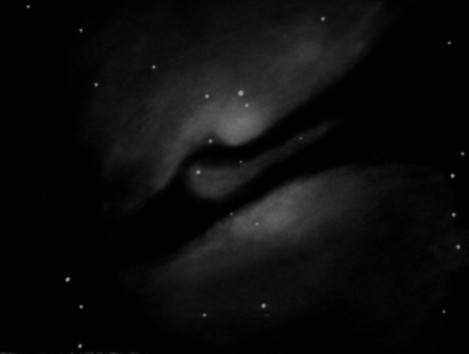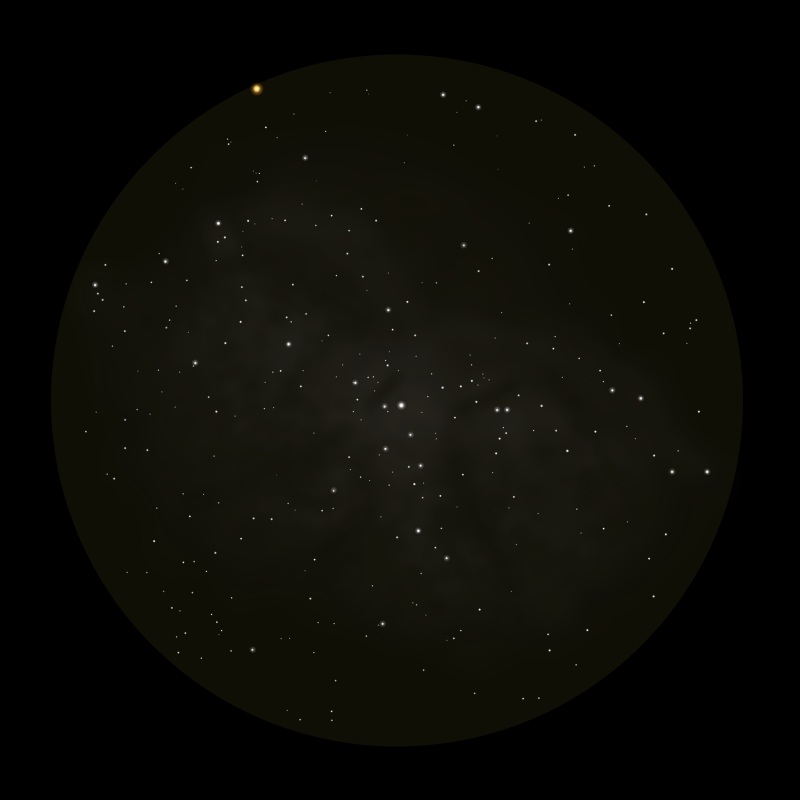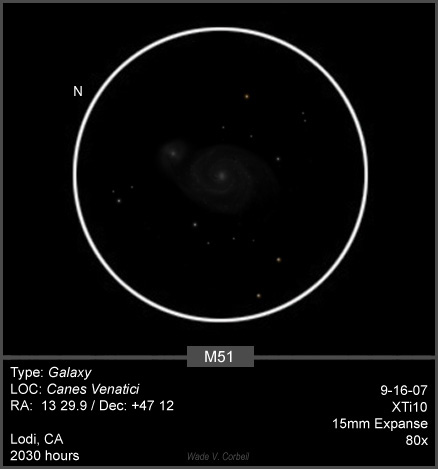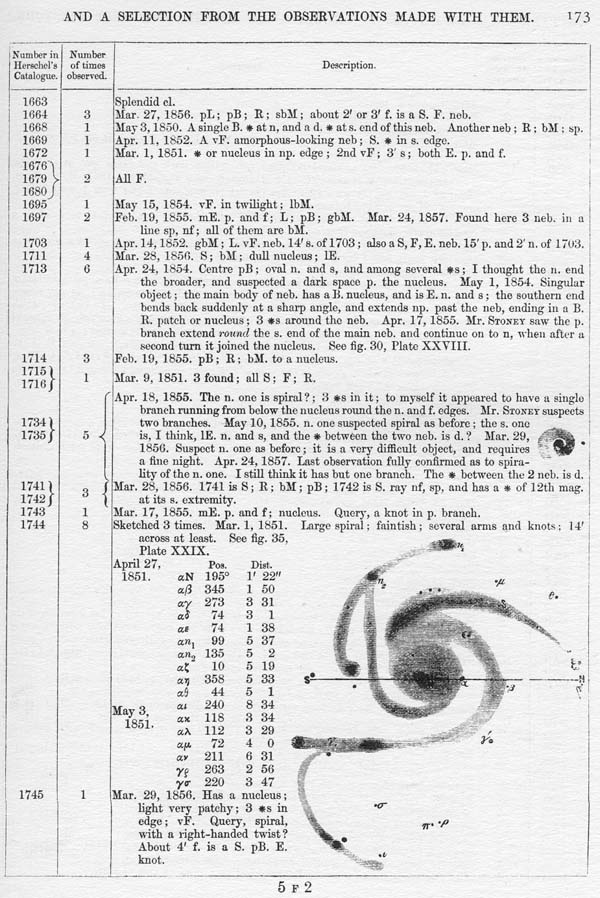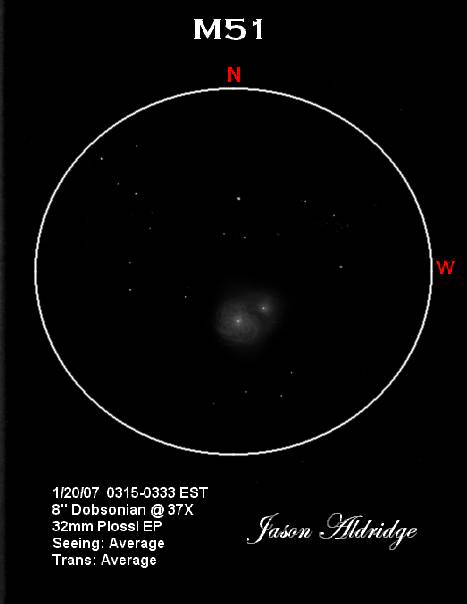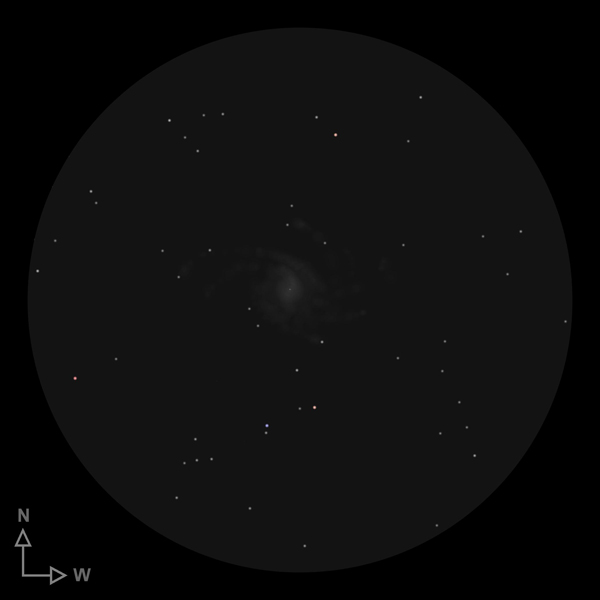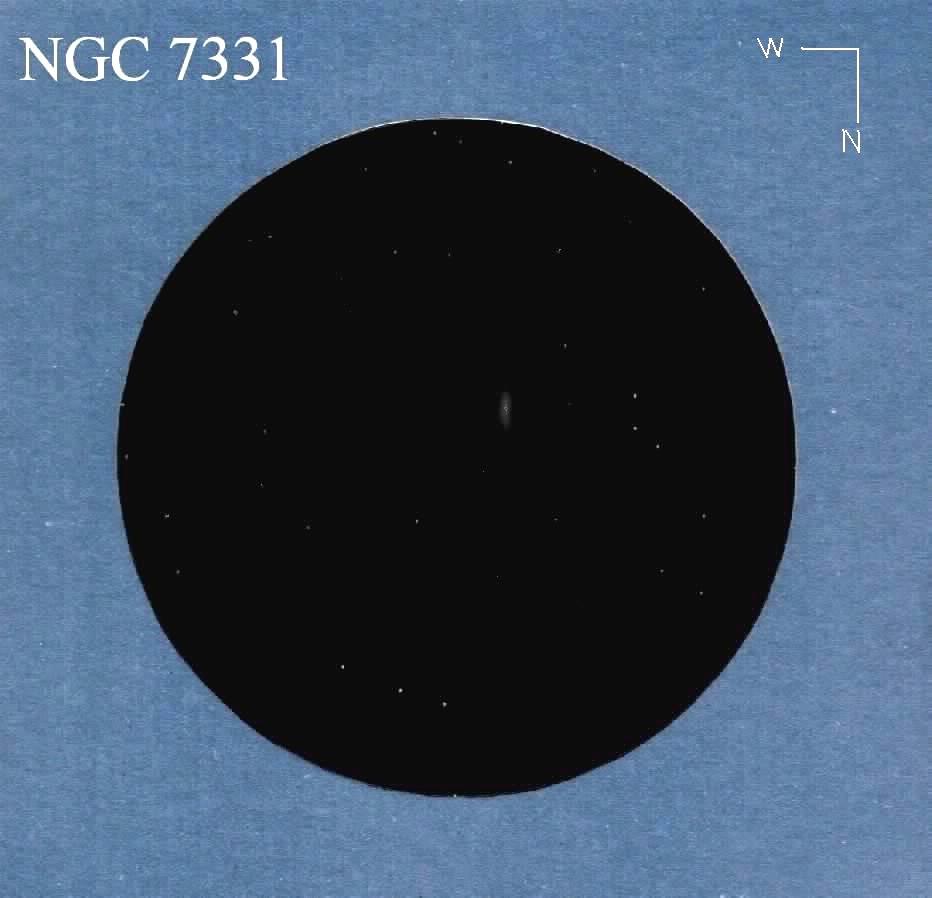M33 and HII Regions
By Kiminori Ikebe
From the English translation at Mr. Ikebe’s website:
M33 (NGC 598) Triangulum Galaxy – Difficulty Level: 2/5
NGC 588 Tri Star Cloud – Level: 5/5
NGC 592 Tri Diffuse nebula – Level: 4/5
NGC 595 Tri Diffuse nebula – Level: 4/5
NGC 604 Tri Diffuse nebula – Level: 3/5
Date of observation: 1998/11/14 21:55
Observing site: Makinoto
Transparency: 3/5
Seeing: 4/5
Sky darkness: 4/5
Instruments: 32cm Dobsonian and Pentax XL14
Magnification: 110x
Width of field: 0.6 degreeThis is a galaxy with a dynamic spiral arm.
The haze around the core is very faint and requires dark adaptation to see its extent. Once your eye is fully adapted, you will be surprised how extensive the haze is. NGC 604 is bright and located in the northeast of this galaxy. If you spend enough time, you will be able to detect this galaxy’s magnificent spiral structures as well as star clusters and nebulae such as NGC 588, NGC 592, and NGC 595 within the galaxy. The core is compact and elongated. At its center lies a small shining nucleus. There are two arms visible, one in the south and the other in the north; both are spiraled counter-clock-wise. The southern arm is divided into three regions. The northern arm is thin and broken off at places while embedded in haze. Other regions of the galaxy appear as faint haze.
NGC 604: Almost circular and small, but as bright as the center of M33.
NGC 595: A small faint object located near where the northern arm starts. The center of this object appears stellar surrounded by fuzzy nebulosity.
NGC 592: This object looks like a faint small spot.
NGC 588: It is located far from the center of M33 and easily missed. It is a much smaller spot than NGC 592.
Mr. Ikebe uses white pencil and “poster color” on black drawing paper. An extensive collection of his sketches can be found on the English section of his website. A larger collection can be found at the Japanese language site.

